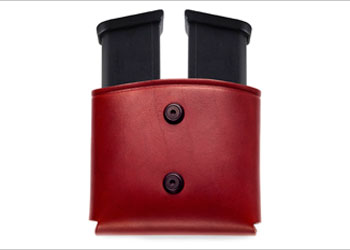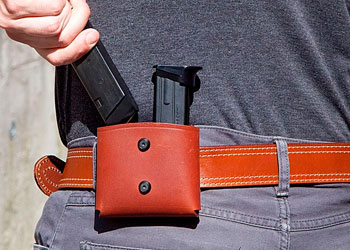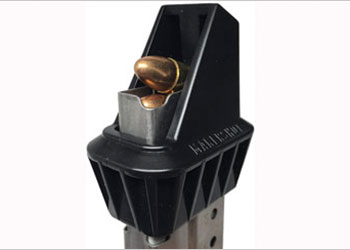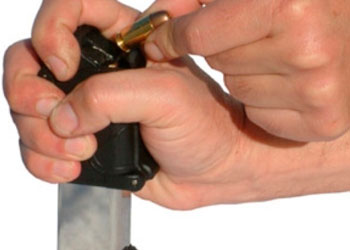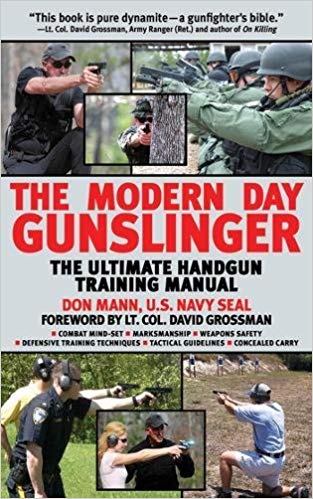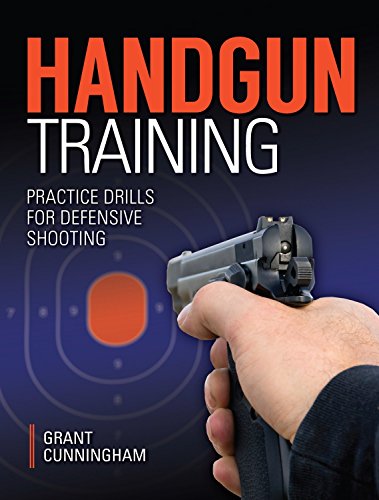Walther PPS Magazines
AMMO AND MAGAZINE GUIDE FOR Walther PPS
Have you ever woke up during the night and thought ‘man, I need more ammo for my Walther {GUMODEL}, then went to buy some nice rounds for it, came hope happy and realised that you’ve only got one mag to feed the ammo in? That sounds like a straight up nightmare. The old shaolin saying is ‘more ammo is always a good choice’ and we’re here to guide you through all the things about Walther PPS magazines plus some extra tips at the end. So let’s start at the beginning, If you ever find yourself in a self-defense situation, you’ll quickly realize that you can never have too much spare ammunition. That spare ammunition can be a life saver and having an extra mag at the ready is always a good idea. You can find hundreds of opinions on the internet on how much is enough, some may tell you that 2 or 3 extra mags are enough, some may tell you that at least 30 rounds are enough, some may tell you otherwise. But all of those responsible shooters know one thing, carrying spare ammo in a proper mag pouch or mag holder is as important as having a handgun holster. So before you check on all the things about magazines and all the possible upgrades to your Walther PPS carry capacity, be sure to check custom made magazine pouches below.
Mag Pouches For Walther PPS
Magazine pouches provides space for extra magazines or rounds of ammo. You can never be wrong wearing one (or two) on your belt or anywhere esle on your body. The most important thing is the extra mag but well, you gotta store them somewhere, so be sure to check them out below.
HOW TO IMPROVE YOUR Walther PPS RELOAD
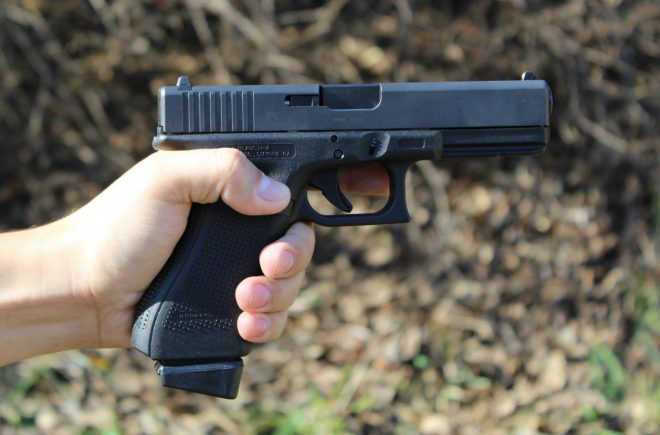
Sometimes the aftermarket or any type of market is generous and you can find some upgrades to your magazines or some spare ones. Be sure to check the link and if you’re lucky you can find what you need.
Walther PPS MAGAZINE LOADERS
Mind the thumb sometimes and get yourself a proper magazine loader. Loading one mag may be fun and games but if you plan on emptying dozens of mags at the range your thumb will not be happy. Pistol magazine loaders are a handy thing that you can fit almost anywhere in your range bag. Let’s talk about the best handgun mag loaders on the market.
Makershot Custom Magazine Speedloader
For Your Walther PPS (From $12.81)
MakerShot custom speed loaders are fine-tuned across more than two dozen critical dimensions for a specific magazine, resulting in superior fit, speed, comfort, and durability. Simply select your magazine and caliber from the dropdown menu above to order a loader that is specifically designed for your magazine. .
- Universal magazine loader/unloader
- A budget-friendly option that speeds up the reload
- Makes life easier, if life is centered around reloading mags
- Compatible with 9mm, 10mm, 357 40- and 45-caliber mags
Etsets Mag Loader
For Your Walther PPS (From $22.99)
The ETSETS Universal Pistol MAG Loader 9MM revolutionizes magazine loading with its universal compatibility, designed to fit a wide array of 9MM magazines. This loader is meticulously engineered to optimize fit, speed up reloading times, enhance user comfort, and ensure lasting durability. Its universal design means shooters can effortlessly load various magazine brands and styles without needing multiple loaders. Selecting and ordering this versatile tool is easy; its one-size-fits-most approach simplifies the process, making it an essential accessory for 9MM pistol owners prioritizing efficiency and convenience.
- Universal compatibility with most magazines.
- Significantly reduces reloading time and effort.
- Durable construction ensures long-term reliability.
- Ergonomic design enhances comfort during use.
Check Out Other Mag Loaders For Walther PPS
While ETSETS and MakerShot are popular choices for speed loaders, they represent just a fraction of the options available to firearm enthusiasts. The market is filled with a variety of brands and models, each offering unique features and benefits to suit different preferences and magazine types. From specialized loaders designed for specific calibers to universal models that accommodate a range of magazines, there's a speed loader for every shooter's needs. Exploring these options on Amazon can provide a comprehensive view of the latest innovations and customer reviews to help make an informed decision. Amazon's extensive selection ensures that you can find the perfect speed loader to enhance your shooting experience, whether for practice sessions or competitive shooting.
HOW TO RELOAD YOUR Walther PPS PROPERLY
You may be the fastest hand in the west and empty a mag on target in zero point fast seconds, but if you can’t reload your gun properly well, there is just some bad news coming your way. Let’s talk about 4 key pistol reloads and 9 magazine tips.
The 4 major Pistol Reload Methods:
- 1) EMERGENCY RELOAD (ER) or Slide-Lock Reload
- 2) SPEED RELOAD (SR);
- 3) TACTICAL RELOAD (TR); and
- 4) RELOAD WITH RETENTION (RR).
1) EMERGENCY RELOAD (ER) or Slide-Lock Reload
You perform an ER when the pistol's slide is locked back, all rounds have been fired from the mag and chamber, and the gun runs out of ammo. There is NOT a round left in the chamber and the gun and mag are empty. So, you press the mag release to release the empty mag, insert the new fully-loaded mag by placing your index finger of your support hand on the front of the mag to guide it, and then release the slide forward. These steps are very similar to the SR steps that follow.
2) SPEED RELOAD (SR)
You perform an ER when the pistol's slide is locked back, all rounds have been fired from the mag and chamber, and the gun runs out of ammo, you press the mag release to release the empty mag, insert the new fully-loaded mag by placing your index finger of your support hand on the front of the mag to guide it, and then release the slide forward. These steps are very similar to the SR steps that follow.
1) Press the mag release with your strong-hand thumb to eject the partially empty mag to the ground; Keep the gun high center chest. In a SR, an advantage is that the gun is still in battery and loaded with a round in the chamber, so you do not have to rack the slide. The disadvantage is that you have ejected a mag with rounds in it to the ground.
2) A split second before your strong-hand thumb presses the mag release to release the mag to the ground, your support hand should have grabbed and started pulling out a new fully-loaded mag from where it is stowed. At the same time, your strong-hand thumb should move to the mag release button.
3) Place your index finger straight alongside the front strap of the mag to guide it when you get the full mag and insert it into the mag well. Place the back of the mag into the mag well directly to the rear against the backstrap and with the rounds in the mag bullet-end facing forward toward the target.
4) Quickly move your support hand up in position to quickly rack the slide rearward to chamber a round from the new full mag.
(3) TACTICAL Pistol Reload Method (TR)
When there is a round in the chamber and you have a partially-spent mag during a break or lull in the action, it may be necessary for you to catch your breath and refresh your partially-filled mag with a fully-filled one for the action that follows.
WheThe shooter gets a new mag with his support hand, moves it toward the gun, releases the mag in the gun to the support hand where it is held at the same time the new mag is inserted into the mag well. The shooter has two mags in his support hand at the same time. Remember, you do NOT want the ejected mag to go to the ground so it will be readily available later. Do NOT drop one or both mags or fumble with them. The major advantage of the Tactical Reload is that you have a few extra rounds or so already in the partially-empty mag for later.
(4) RELOAD WITH RETENTION : Pistol Reload Methods (RR))
With the RR, you first release the partially-loaded mag into your support hand, stow it in your pocket (NOT onto the ground), then get a fully-loaded mag from your pouch, and place it in the gun, with rounds still in the magazine, one round in the chamber, and from a tight, close high-ready retention position. This is a more basic and efficient reload method than some of the others and is preferred by many shooters, since there are less manipulations and only one hand (support hand) is used.
9 Mag and Reload TIPS to Consider:
Ensure the Mags Always Face the Same Direction in your mag pouch, so you can grab them and insert them correctly and quickly in the gun (I like to face the bullet-end of my rounds in the mag towards the front);
1) When you grab or acquire a mag from the pouch or insert it into a mag well, always index and guide it into place by extending your support-hand index finger on the front strap of the mag
2) Always safely keep the gun's muzzle pointed downrange or slightly up to the air on your right side, while grabbing the mag from the pouch and performing the reload
3) Hold the gun up high in the chest or chin area (high retention position) with arms in close to the body during reloads and mag changes
4) Label your Mags by Priority (1,2,3,4), so you will know which ones are the reliable ones and your frequency and order of use
5) Ensure the Mags Always Face the Same Direction in your mag pouch, so you can grab them and insert them correctly and quickly in the gun (I like to face the bullet-end of my rounds in the mag towards the front)
6) Rotate & Shoot your Various Mags Often (especially carry ones) to ensure they function well (I try to change my carry mag springs once a year or so)
7) Never Place EMPTY Mags back in the Mag Pouch so you can expect the mag you reach for to be loaded; some say put ONLY fully-loaded mags in the pouch, while others say put the partially-loaded mags in your pocket or in another pouch or at the back position of a double-mag pouch (your call)
8) Divide your mags into 2 categories: Practice Mags and Personal Protection-Carry or Home Defense use, based on their reliability and length of use;
9) Have at least 4 Mags Per Gun, since they are easily damaged, are perishable, and will not last forever; your purpose and use for the gun influence the number of mags you should own.
THE Walther PPS SHORT AMMO GUIDE
We are dealing with the issue of extra ammo, how to get it in the mag the best way and how to reload like a pro but unless you haven’t got the AMMO itself you may as well read about rocket science without sitting in your rocket. So not only is it important to know the size of ammunition you need, but it is also important to consider the use you have intended for the bullets that you are picking out. Consider the type of ammo that you prefer. The type of bullet varies and may be important if you are using the ammo for a specific activity such as either target shooting, hunting, or self-defense. Here are examples:
- Full Metal Jacket (FMJ) have a brass or other metal casing surrounding the softer (usually lead) core. These are required by the Geneva Convention for military rounds, as they have very limited expansion, making combat wounds less devastating. They generally leave less fouling on the barrel's rifling, resulting in slightly better accuracy than some other rounds.
- Soft point bullets have the front, or tip of the bullets soft metal core exposed, but the sides and tail of the bullet are jacketed so they foul the barrel less than bullets with no jacket at all, and engage the barrel's rifling more aggressively.
- Hollow points have a hole in the center of the tip of the bullet, which causes more initial expansion on impact. There are arguments as to whether this feature affects accuracy, but the real results vary from gun to gun.
- Semi Wadcutter bullets are flattened on the end to create a shockwave in living tissue on impact. These are often a preferred round for self defense, since the generally do more damage than other bullets. Wadcutters have a completely flattened tip, again designed for causing maximum damage on impact. Shot shell bullets are bullets load with small bird shot, sometimes referred to as rat shot, used for shooting small varmints (hence the name) at very close ranges.
- Non Lethal rounds are special low velocity rounds used for riot control and other police/military purposes. Blanks, as the name implies, are blank cartridges, containing only a powder charge, used for theatrical purposes or in starter pistols.
- Other bullets include frangible bullets, tracers, and armor piercing rounds with special purposes not really addressed in this content.
Top 3 Books To Improve Your
Walther PPS Shooting Skill
1. Your Defensive Handgun Training Program (From $29.95)
Your Defensive Handgun Training Program is a cutting edged functional training program designed to develop the skills needed to survive a high stress encounter while using the most commonly carried weapon system in the U.S., the handgun. If you are armed and carry a handgun daily (CCW holders, Law Enforcement Officers, etc.), get the tools to prepare yourself for the fight of their life. This book is your answer! While there are numerous "tactical" handgun books out there, some with good material, most do not address the "how to train" question. This book is different, and includes a full training program including training trills and a schedule to follow.
2. The Modern Day Gunslinger: The Ultimate Handgun Training Manual (From $14.36)
A result of twelve years of research, The Modern Day Gunslinger was written to meet the needs of the gun owner, the experienced shooter, those who own a weapon strictly for home and self-defense, and for the military member who wants to become a better shooter in defense of our country. It’s also for the law enforcement officer who risks his or her life going against the thugs of our society and for anyone interested in learning the defensive and tactical training techniques from some of the best and most experienced shooters in the world.
3. Handgun Training - Practice Drills For Defensive Shooting (From $14.47)
You have a handgun for self-defense, and have taken a good defensive shooting class. How do you practice and maintain those critical skills? Handgun Training: Practice Drills for Defensive Shooting by Grant Cunningham has the tools you need to hone your skills at your favorite range. Inside you'll find: Handgun drills you can do on your own. Shooting drills you can do with a training partner. Concealed carry drills to help replicate the environment in which you live. Tactical drills that you can do even on very restricted shooting ranges.
Accessories
Mod your Walther PPS with these accessories
Choose from various modifications for your Walther PPS, including holsters, parts, sights, magazines, grips, lasers, lights and cleaning utilities.

Magazines for Walther PPS
Once you shoot all the rounds from your Walther PPS, there is a good chance you will reach for a spare magazine. This kind of gun accessory will help you to improve your preparedness and grant you that extra feeling of safety in the form of more rounds for your target. Check article below about magazine options for your Walther PPS.
